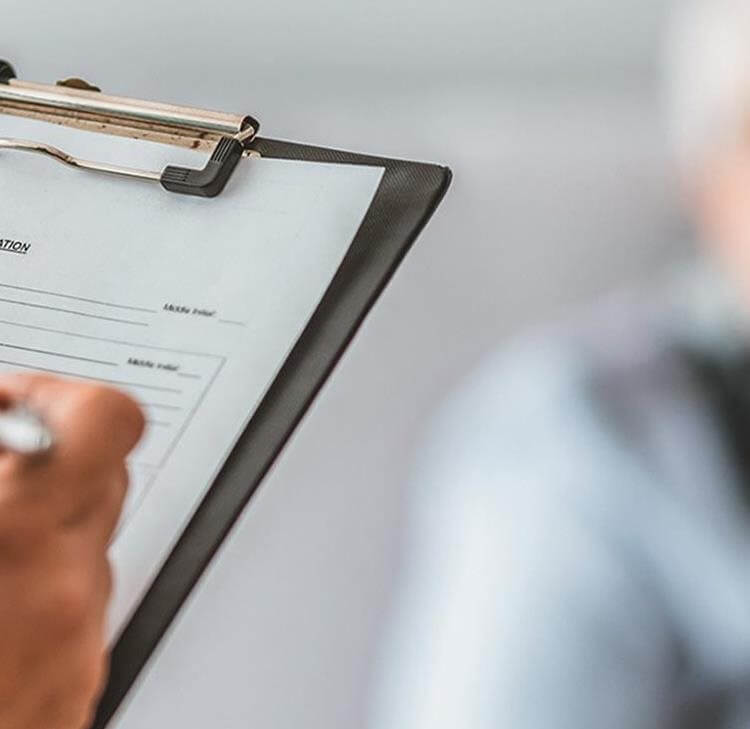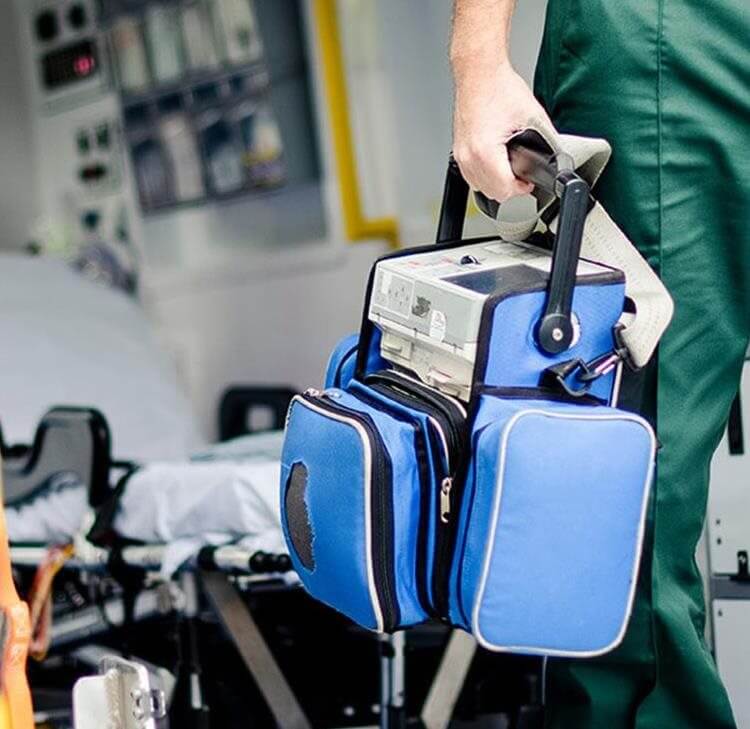Section 1: When does the Coroner hold an inquest?
The Coroner has a duty to investigate a death where:
- The cause of death is unknown.
- The death occurred in custody or state detention, which will include deaths in prison or police custody and deaths while the deceased was detained under the Mental Health Act.
- The death is violent, including self-harm.
- There is reasonable cause to suspect that the death is unnatural. This will include deaths that were more than minimally contributed to by medical treatment or a procedure, for example:
- The death was due to a recognised complication of medical treatment.
- The death was more than minimally contributed to by shortcomings in the medical treatment.
Section 2: What is an inquest?
- An inquest is a fact-finding inquiry to establish who has died, and how, when and where the death occurred.
- We usually know who has died and when and where the death occurred. For that reason, inquests usually focus on ‘how’ the person died. This goes beyond establishing the medical cause of death and the Coroner will scrutinise the circumstances surrounding the death.
- It is not the Coroner’s role to apportion blame and the Coroner’s conclusion will not name any individual or organisation as being negligent or criminally liable for the death. However, during the evidence at the inquest, the Coroner will scrutinise the medical treatment that the patient received and will seek to identify any shortcomings in care that more than minimally contributed to the death. This can sometimes feel like blame is being apportioned.
Section 3: The inquest hearing
- Most inquests are heard and decided by a Coroner. A small number of cases each year are heard and decided by a jury. Most often this is because the person died whilst they were in custody or state detention and the cause of death was either violent or unnatural.
- The Coroner decides which witnesses must attend an inquest, and in what order they are to give their evidence.
- At the hearing, all parties will enter the courtroom at the start of the day. All witnesses will sit in the public gallery and are permitted to do so throughout all the evidence.
- The Coroner will come into the courtroom once everyone is present. You are expected to stand up when the Coroner comes into or leaves the courtroom.
- Every witness will be asked to swear an oath or an affirmation before giving evidence.
- Witnesses are expected to take their witness statement into the witness box and any other relevant documents. Please make sure you print your statement as it will look more professional.
- The Coroner will lead the inquiry and ask questions of the witnesses first.
- After the Coroner has asked all his or her questions, the family or their legal representative can ask questions. Lawyers for other interested persons can then ask questions. If there is a jury, each member of the jury can also put questions to the witness. The Coroner will ensure that no inappropriate questions are asked. Lastly, your organisation’s own legal representative can ask you questions. These questions are usually intended to elicit any important details that have not yet been given in evidence, or to clarify matters arising out of previous questioning.
- Once you have given your oral evidence, the Coroner will usually release you. At this point, take a seat and wait until the next natural break to leave the courtroom, if you wish to do so before the end of the inquest. If you are not formally released, you will need permission from the Coroner before leaving the court, as the Coroner may need to ask further questions of you (after hearing evidence from other witnesses).
- The inquest will take place in a public court. Anyone can attend and journalists can generally print what they hear in court. Photographs are not allowed within the court building. A reporter from local media or television may approach you at the end of the inquest and they can take photographs outside the court building, although this is relatively unusual. If you are approached by the press, your organisation should have prepared a press statement and you should refer the press to the communications team, if possible.
Section 4: Court day checklist
- Plan your journey and plan to arrive early.
- Dress smartly (as though you are attending a job interview).
- Be prepared. Familiarise yourself with your statement, the medical records, investigation report and any other relevant documents in advance of the inquest, including relevant local and national policies and guidance.
- Ensure you are familiar with the recommendations and action plan set out in any internal investigation and that you can answer questions about any changes to practice that have been implemented as a result of the death.
- Print a copy of your statement and any other documents you wish to refer to when giving oral evidence. Please be mindful that a witness should be prepared to show to the Coroner anything they take into the witness box.
- Be aware that the family and press will be present. This is a solemn day, and you must behave professionally and respectfully at all times. Remember that you may be seen or overheard by the family and press both inside and outside of the courtroom.
- You may wish to express condolences to the family. You can speak to the family before or after an inquest, if they want to speak to you. Or you can express your condolences at the start or end of your evidence. Each situation and relationship are different, and the right approach will vary from case to case. Organisations should not wait until the day of the inquest to express sympathy or offer apologies.
Section 5: Giving oral evidence
- Do not sit down while giving oral evidence unless invited to do so by the Coroner. Some Coroners prefer witnesses to stand when giving evidence.
- Witnesses give evidence under oath or affirmation; you will be asked to select one or the other. An oath is a religious commitment to tell the truth, whereas an affirmation is a non-religious promise or declaration to tell the truth. Both carry the same weight. Once you have taken the oath or affirmation, the uppermost thing in your mind should be giving an answer that is truthful.
- Some Coroners will ask you to read out your witness statement and other Coroners will ask you questions based on what you have written in your statement.
- Give a full, straightforward and factual account. Do not speculate or guess. Share the story of what happened logically, and from beginning to end in plain English.
- Take your time, concentrate, speak clearly and slowly.
- Call the Coroner Sir or Ma’am / Madam.
- Be honest, helpful, professional, and compassionate.
- Listen to the question and only answer that question.
- Do not try to predict the next question.
- Do not attempt to fill any silences.
- Allow your legal representative or the Coroner time to interrupt if you think an inappropriate question has been put to you.
- Avoid medical jargon. Explain medical terminology to assist the court and to help those attending to understand.
- Ask for clarification if you do not understand the question.
- If you do not remember something, then say so. Do not guess or speculate. Do not be afraid to answer a question with ‘I do not know/cannot remember’. If you need to refer to the clinical records in order to answer a question, then do so.
- If you feel the question asked is outside of your expertise, then you should state this clearly. You should say something like, “I am afraid that I cannot answer that question, it is outside the area of my expertise”.
- If asked a question in a confrontational manner, do not become defensive. Answer as calmly and as simply as possible.
- Address your answers to the Coroner.
- NHS Resolution has produced a useful film to demonstrate how a clinician may present evidence in court, and what a well-prepared witness looks like.
Section 6: Giving evidence remotely
- You may be permitted by the Coroner to give your evidence remotely, via Teams or a similar platform. You can watch our mock inquest training video, which recreates an inquest where the family and witnesses are participating remotely.
- The same rules apply whether attendance is in person or remote. By joining via video link, your video room becomes an extension of the court room. You must treat the remote hearing as seriously and formally as you would if you were in court and follow all rules of court etiquette.
- Dress smartly (as though you are attending a job interview).
- The room you give evidence in should be quiet, private and secure and all doors should be closed.
- Steps should be taken to ensure that you will not be interrupted during the inquest. For example, it would be appropriate to place yourself on “DO NOT DISTURB” and for a clearly worded note to be displayed on the door that states “DO NOT ENTER – INQUEST HEARING IN PROGRESS”.
- Test your internet connection in advance to ensure you have access to all systems and documentation you will need during the inquest (especially if you will be attending remotely from home or off site).
- You will need to be on video when called to give your evidence. At all other times (e.g. during breaks or when others are giving evidence) you will be asked to mute your audio and switch off video.
- If you encounter a technical issue, do not panic! Just let the Coroner or your legal representative know as soon as possible.
Section 7: Inquest conclusions
- At the end of the evidence, the Coroner (or jury, if there is one) will make findings of fact and will return a conclusion.
- The following are examples of short form conclusions:
- Natural causes
- Accident
- Misadventure
- Suicide
- Alcohol / drug related
- Road traffic collision
- Stillbirth
- Unlawful killing
- Open
- Alternatively, the Coroner can record a narrative conclusion, which is a brief, neutral, factual statement (usually one or two short paragraphs) addressing the issues which are central to the cause of death.
- Finally, the Coroner can make a finding of neglect if he or she finds that there has been a gross failure to provide basic medical treatment and that this has more than minimally contributed to the death.
- You can read more about this in the Chief Coroner's Guidance on Conclusions.
Section 8: Regulation 28 / Preventing Future Deaths
- Coroners have a duty not just to decide how somebody came by their death but also, where appropriate, to report about that death with a view to preventing future deaths. A bereaved family wants to be able to say: ‘His death was tragic and terrible, but at least it shouldn’t happen to somebody else.’
- The Coroner has a legal duty to send a report to Prevent Future Deaths (PFD report) if they have heard evidence which gives rise to a concern that there is a risk of deaths occurring in the future.
- The report will be sent to the person or authority that has the power to take the appropriate steps to reduce the risk. A response must be submitted to the Coroner within 56 days.
- The PFD report and the response are public documents. They are often copied to the CQC and other regulators.
- PFD reports are published here.
- Providing evidence of organisational learning at an inquest is important. As a witness, you will need to be aware of any organisational learning that has taken place, such as extra training or changes in policy, in order to prevent further deaths. You are likely to be asked about this when giving oral evidence. If the Coroner is satisfied that the organisation has already identified a problem, and ‘fixed’ or improved it, a coroner would not usually issue a PFD report.
- Read the Chief Coroner’s guidance on PFD reports.
Section 9: Further guidance and resources
- NHS Resolution has produced its own guidance and training resources, explaining how witnesses may prepare for an inquest, which you may find useful.
- The Ministry of Justice has also produced a guide to the coroner service. Although it is aimed at bereaved families, it can also be used by those who have been called to attend an inquest.
- For those working in maternity services, you may wish to view our mock neonatal inquest films on our Maternity Hub.
Contact

Nicola Evans
Partner
Nicola.Evans@brownejacobson.com
+44 (0)330 045 2962
Contact Nicola









































